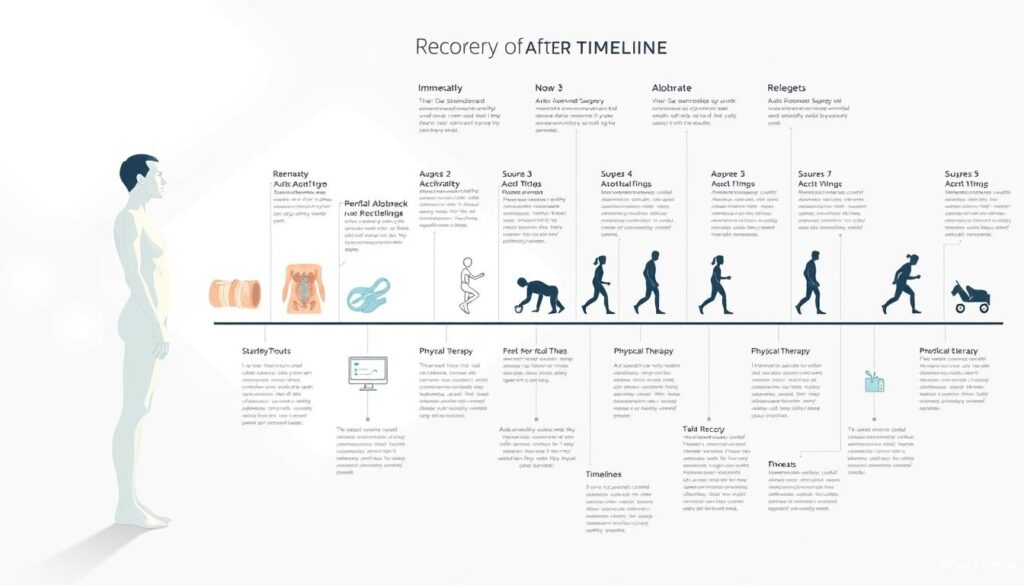
Recovering from abdominal surgery needs a careful plan to build strength and function back. At Liv Hospital, our expert-approved routines help patients regain core strength and confidence.Discover 6 practitioner-approved abdominal exercises after abdominal surgery. These essential moves will help you heal strong and safe.
Gentle exercises after surgery can make your abdominal muscles stronger. This helps lower the chance of complications. Our expert-approved exercises are made to help you recover safely and effectively.

Recovering from abdominal surgery is more than just healing. It needs a detailed rehabilitation plan. This plan is key to getting strong again, improving health, and avoiding problems.
Abdominal surgeries affect core muscles differently. For example, laparoscopic cholecystectomy might have less effect than open surgery. Knowing these differences helps make better rehabilitation plans.
Abdominal surgeries can weaken core muscles. The impact varies based on the surgery type and complexity.
Studies show that structured exercise is vital for better recovery after abdominal surgery. Patients who follow exercise plans usually see better health results.
| Study | Sample Size | Outcome |
| Smith et al., 2020 | 100 | Improved recovery time and reduced complications |
| Johnson et al., 2019 | 200 | Better functional capacity and reduced pain |
Moving and exercising after surgery can lower the risks of problems like adhesions and hernias. Gentle exercises are important in a rehab program.
For those with Crohn’s disease, surgery is common. Adding exercise to their recovery can improve health and lower future risks.

It’s important to know when to start exercising after abdominal surgery. This helps avoid complications and ensures a good recovery. The timing depends on the surgery type and the patient’s health.
Recovery times vary with different abdominal surgeries. Laparoscopic procedures usually have shorter recovery times than open surgeries. Most patients can start core strengthening exercises about six weeks after surgery.
Recovery Timelines for Common Abdominal Surgeries:
Before starting exercise after surgery, look for these signs:
Waiting for these signs is key to a safe start in exercise.
Some signs mean you should wait to exercise:
If you notice these symptoms, talk to your healthcare provider before exercising.
Before starting exercise after abdominal surgery, a detailed check-up is key. This step makes sure you’re ready for physical activity and keeps you safe.
Doctors say getting medical clearance is not just a formality. It’s a must for your safety during recovery. This clearance lets doctors check your health and give you advice that fits you.
Getting medical clearance is a must before starting any exercise after surgery. Your surgeon or doctor will check your health and the surgery site before giving you the green light.
“The decision to begin exercise should be made in consultation with a healthcare provider, taking into account the individual’s overall health, the type of surgery, and the presence of any complications.”
American College of Sports Medicine
Checking your functional status means seeing how well you can do daily tasks and simple movements. This helps create an exercise plan that’s right for you.
Setting realistic recovery goals is important for staying motivated and exercising safely. These goals should be clear, measurable, achievable, relevant, and have a deadline (SMART).
For example, a short-term goal might be to walk a certain distance without pain. A long-term goal could be to do more intense activities or sports. Always check and adjust these goals with your doctor to keep up with your progress.
Early mobilization techniques are key to better recovery after abdominal surgery. They help improve blood flow, prevent problems, and get you moving again. Using these methods early on can greatly improve your recovery.
Therapeutic breathing exercises are a big part of early mobilization. Deep breathing exercises boost lung power and help avoid lung issues. Patients should do diaphragmatic breathing often, focusing on deep breaths and slow exhales.
This not only helps with breathing but also lowers stress and promotes calm.
Structured walking programs are also key. Walking boosts blood flow, stops blood clots, and improves heart health. Start with short, easy walks and slowly make them longer and harder as you get better.
It’s important to watch for any pain or discomfort and adjust your walks as needed.
A gentle range of motion activity keeps you flexible and prevents stiffness. These exercises involve gentle limb and torso movements within a safe range. Range of motion exercises can be done with breathing and walking for a full early mobilization plan.
Make sure to follow a healthcare professional’s guidance to do these exercises safely and right.
Combining therapeutic breathing, structured walking, and a gentle range of motion activities helps patients recover smoothly and effectively. These early steps are essential for a successful recovery journey.
Approved exercises are key to healing after abdominal surgery. They help regain strength, improve flexibility, and aid in recovery. Pelvic tilts are a foundational exercise that can start as early as two weeks after surgery.
Pelvic tilts are a gentle yet effective exercise. They target the deep core muscles, including those around the urogenital diaphragm. This exercise is vital for reconnecting the brain with the core muscles during recovery.
To do pelvic tilts correctly:
Benefits of Pelvic Tilts: They activate the deep core muscles, improve flexibility, and reduce discomfort after surgery.
| Exercise | Benefits | Precautions |
| Pelvic Tilts | Activates deep core muscles, improves flexibility | Start with gentle movements, avand oid if pain occurs |
| Other Essential Exercises | To be discussed in subsequent sections | Follow practitioner guidelines |
Start with low-intensity exercises and gradually increase as you recover. Always check with a healthcare provider before starting any new exercise routine after surgery.
Recovering from hernia surgery requires understanding unique challenges and precautions. Patients must navigate a complex post-operative landscape. This ensures proper healing and minimizes complications.
Those with an umbilical hernia repair need to modify exercises. Pelvic tilts and gentle core engagement are good in the early stages. These exercises help keep the core stable without straining the surgery site.
It’s important to avoid high-intensity abdominal strain early on. This means no heavy lifting, bending, or strenuous activities. These actions could harm the healing process.
Incisional hernia repair needs a strengthening plan. Start with low-intensity exercises to gently strengthen the core. As you get better, you can do more intense exercises.
A progressive strengthening program should fit your health, surgery extent, and your recovery. This helps regain core strength and lowers the chance of future hernias.
Preventing hernia recurrence involves several steps. These include lifestyle modifications, proper wound care, and targeted exercise. A good exercise plan can strengthen the abdominal wall and lower the recurrence risk.
Keeping a healthy weight and avoiding smoking are also key. These actions can greatly impact recovery and recurrence risk.
By understanding these special considerations and adding them to your recovery plan, you can improve healing. This reduces the chance of complications after hernia surgery.
A 12-week plan is key to a good recovery after abdominal surgery. It helps patients slowly get back to normal. This way, they avoid complications.
The first phase is about gentle muscle activation and awareness. Patients start with breathing exercises and gentle movements. These help with blood flow and prevent stiffness.
Phase 2 focuses on building strength. Exercises get more structured, and intensity increases.
Patients can start low-impact activities like:
Studies show that by four to six weeks, patients can do more household tasks. This helps in a smoother recovery.
The final phase aims for full recovery. Patients do more demanding activities and strengthening exercises.
Examples include:
By sticking to this 12-week plan, patients can recover safely and effectively. They will reach the best outcomes after surgery.
Monitoring your exercise program after abdominal surgery is key. It makes sure your rehab is safe and works well. Clinical monitoring tracks recovery, like pain, wound healing, and how well you can move.
Measuring recovery is important. This includes:
A top rehab expert says,
“Regular checks of these measures help tailor the exercise program to your needs.”
Exercise should move forward based on clear rules. These include:
It’s important to increase exercise slowly. This lets your body get used to it without injury.
It’s important to know when to talk to your doctor. You should call them if you have:
Talking to your healthcare provider helps fix problems fast. They can adjust your exercise plan as needed.
Knowing common rehabilitation mistakes can really help your recovery. After abdominal surgery, it’s important to manage your healing well. This helps avoid complications and ensures you heal properly.
One big mistake is putting too much stress on the surgical area too soon. This can make recovery take longer and might cause problems. It’s key to start with gentle exercises and slowly build up.
Pain tells you how your body is doing with exercise. Getting pain wrong can mean you’re doing too much or stopping too soon. Remember, some pain is okay, but sharp worsening pain means stop and talk to your doctor.
Good movement is key during exercises to avoid injury. Ignoring how you move can slow down healing and cause problems.
To keep your movements right:
Being regular is very important in rehab. Not sticking to a routine can slow down your progress. It’s important to keep a steady schedule for the best results.
To stay consistent:
Recovering from abdominal surgery is more than just exercising. It needs a complete approach that includes other strategies. Getting enough pain relief is key to deep breathing exercises, which help in healing. These strategies can cut down recovery time and boost results.
Nutrition is key in recovery. Eating a diet full of protein, vitamins, and minerals helps wounds heal and tissues repair. Important nutrients include:
Good sleep is vital for repair. Sleep helps the body fix damaged cells, build bone and muscle, and boost the immune system. Ways to improve sleep include:
Stress can slow down recovery by weakening the immune system and causing inflammation. Good stress management includes:
Mobilizing scar tissue can make tissues more flexible and reduce adhesions. Techniques include:
Adding these strategies to a recovery plan can improve outcomes and quality of life.
Keeping a strong core is key, not just after surgery. It’s part of a bigger plan for better health and lasting recovery.
Turning exercise into a habit is vital for lasting core health. A routine boosts well-being and lowers future health risks.
A good exercise plan, like the 12-week one mentioned before, is essential. It helps reach the best recovery and keeps the core healthy. It’s important to keep up with the routine for ongoing health gains.
Sticking to a long-term exercise plan brings many benefits. You’ll see better core strength, overall health, and a higher quality of life. Achieving sustainable core health takes consistent effort and a balanced fitness program.
The time to start exercising after surgery varies. It depends on the surgery type and how well you’re recovering. You can start with gentle movements a few days after surgery. But, more intense exercises might come weeks later. Always follow your doctor’s advice.
Exercising your abs after surgery helps strengthen your core. It also improves your recovery and lowers the risk of complications like hernias. A good exercise plan can boost your physical function and prevent future injuries.
You’re ready to exercise if your vital signs are stable and your pain is manageable. You should also be able to do daily tasks without too much pain. Your doctor will check if you’re ready to start exercising.
Key exercises include pelvic tilts for basic stability. You might also do gentle movements, breathing exercises, and walking. These exercises should match your surgery and recovery stage.
Yes, hernia surgery requires special care. For example, umbilical hernia repair might mean avoiding bending or lifting. Incisional hernia recovery might need a strengthening plan to support your abdominal wall.
To prevent recurrence, start with gentle exercises and focus on proper movement. Keeping a healthy weight is also important. Your doctor might suggest specific exercises or physical therapy for core stability.
A 12-week plan has three phases. The first two weeks focus on awareness and basic strength. Weeks 3-6 build more strength. Weeks 7-12: Improve your functional ability. The plan should fit your recovery and surgery.
You should see your doctor regularly to check on your recovery. They can address any issues and adjust your exercise plan as needed. How often you see them depends on your recovery.
Avoid overloading your surgery site too soon. Don’t ignore pain during exercise. Also, pay attention to your movement and stick to a consistent exercise routine. Knowing these mistakes can help you recover better.
Yes, strategies like good nutrition, sleep, stress management, and scar tissue mobilization can help. Use these along with a structured exercise plan, under your doctor’s guidance.
Keep exercising regularly and stay fit. Listen to your body and don’t overdo it. Long-term exercise and fitness are key to lasting core health.
Subscribe to our e-newsletter to stay informed about the latest innovations in the world of health and exclusive offers!
WhatsApp us